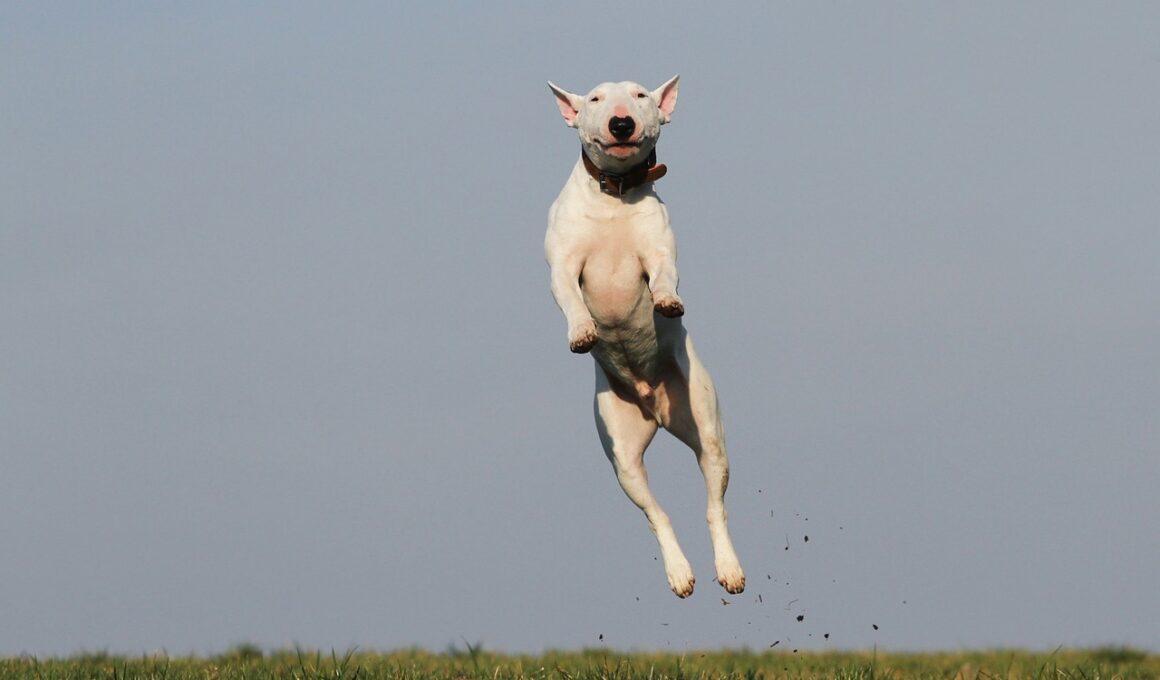Avoiding Distracted Training Environments for Better Dog Learning
Training your dog is an essential aspect of pet ownership, but environmental distractions can significantly impair the learning process. A training environment that is filled with noises, smells, and other distractions can overwhelm a dog, making it hard for them to focus on commands. For effective dog training, you must first understand these distractions. They can include anything from other animals, loud noises, or even unfamiliar people. Therefore, it is essential to choose a quiet location devoid of these distractions. If the dog is distracted, you may find that training sessions are less productive than anticipated. Consider your dog’s energy levels and ensure that sessions are held in a calm space, allowing them to concentrate entirely on the tasks at hand. Over time, gradually introducing more distractions can help your dog learn how to focus amidst noise. This method will increase their confidence and make future training sessions easier. Remember that patience is key, and having a controlled environment will provide a solid foundation for developing important skills in your dog.
Physical Environment: A Key Factor
The physical environment where training occurs plays a crucial role. A well-structured area contributes positively to how a dog perceives training. The choice of space should ideally be separated from distractions such as traffic and other animals. Look for open spaces where your dog feels comfortable. A backyard or a secluded park can work wonders. Regardless of your choice, ensure that it is a safe and secure area, where your dog can roam freely without obstacles or hazards. Keeping your dog on a leash at first can also help maintain control during sessions. Consider the time of day when selecting this space; quieter times with minimal foot traffic can foster a more focused atmosphere. Establishing a routine for training sessions will also contribute to minimizing distractions. Dogs thrive on predictability, and knowing when and where training will take place can help them mentally prepare. Remember that the environment’s aesthetics do not matter as much as its functionality in providing a distraction-free area for learning.
In addition to the physical space, the visual distractions that surround a dog can be equally significant. Vibrant colors, moving objects, and changes in light can capture a dog’s attention immediately. To combat these visual distractions, select a training area that has minimal visual stimuli. Avoid places near busy roads or playgrounds where noise and movement can easily pull your dog’s attention away. Instead, opt for locations with a more neutral backdrop, where your dog can concentrate on you without being visually overwhelmed. If you notice your dog looking elsewhere during training, swiftly redirect their focus back to you. Use treats or toys to regain their attention. Over time, aim to teach your dog how to ignore distractions. This skill is beneficial not only for training sessions but also in daily life, especially during walks. Gradually incorporating more complex environments with controlled distractions can aid in this objective. Familiarity will make it easier for your dog to learn amidst increasing distractions that naturally occur in the everyday dog-walking experience.
Utilizing Training Aids Effectively
While controlling the environment is important, incorporating proper training aids can facilitate better learning outcomes as well. Training aids like clickers, treats, and specific toys can make sessions enjoyable. These tools encourage good behavior and keep your dog engaged, even in potential distractions. Reward-based training techniques help reinforce desired behavior, creating a more positive association with training. If your dog is unfamiliar with certain training tools, take time to introduce them in a calm environment before utilizing them during training. This ensures that your dog understands their purpose and can focus while learning commands. Additionally, create a set schedule for training sessions that incorporates these aids effectively. Small, frequent sessions often yield better results than prolonged, inconsistent ones. For example, if your dog learns better with a specific toy, incorporate it into daily training routines. Consistency and patience are essential when teaching your dog to respond to commands effectively, even with the presence of distractions. A variety of training aids, applied properly, can create an enriching environment conducive to learning.
Another effective strategy for minimizing distractions is to involve other dogs in controlled situations. While this may seem counterintuitive, training alongside another dog can enhance focus if controlled correctly. Ensure all dogs present are well-trained and non-aggressive. Pair similar energy levels to promote a more relaxed environment. If distractions occur, take breaks until calm is restored. Continuously monitor the dogs during training sessions, adjusting the pace according to their needs. Incorporating occasional peer interactions can foster a sense of community and camaraderie that can be beneficial. This method enables dogs to learn to focus amidst other canine companions, teaching them valuable social skills. Gradually increase the complexity of these group training sessions by incorporating more distractions, such as other dogs playing nearby. If you notice your dog struggling to focus, remove them from the environment momentarily and practice in a quieter space. Ultimately, aim to create diverse learning experiences to boost your dog’s adaptability in various settings, reinforcing their ability to engage and learn despite distractions.
Understanding Your Dog’s Individual Needs
Recognizing that every dog is unique is crucial for effective training. Some breeds are more prone to distractions, while others may have a higher capacity to concentrate in various environments. Understanding your dog’s temperamental traits will help you in developing effective training strategies. For instance, high-energy breeds may require shorter, more frequent training sessions to maintain focus. On the other hand, those that tend to be more laid back might thrive in longer learning periods. Tailoring your training approach to fit your dog’s individual personality is an essential step toward improving focus. Additionally, consider how environmental factors like weather or climate may affect your dog’s state of mind. Dogs can become restless due to heat or cold, impacting their ability to train effectively. By adjusting your training environment according to your dog’s needs, you can create a better learning atmosphere. Furthermore, keep records of training sessions, noting which environments yielded the best results, allowing you to understand patterns that will lead to a more effective training routine.
Lastly, human distractions should also be controlled during training to provide the best environment for your dog. If you have young children or other pets, ensure they understand the training session is a focused time for the dog. Establish ground rules so that everyone in the household respects the training environment. For example, let others know when you are training so they can minimize noise and interference. This includes avoiding abrupt movements or unexpected interactions with the dog. Consistency is key in this regard. If your dog sees members of the household distracted or disengaged during training, it may impact their focus level. Creating a calm atmosphere free from competing demands of attention will help your dog to learn commands effectively. Training is a partnership between you and your dog, and maintaining a serene ambiance encourages collaboration. Conclusively, minimizing both environmental and human distractions creates a favorable learning setting, leading to improved focus and overall successful dog training.


